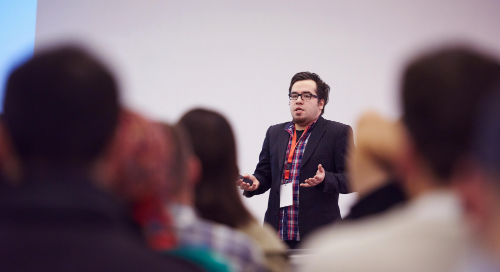leaders-in-medicine-on-how-societies-can-improve-gender-equity
August 13, 2020
Creating a more inclusive research community starts with individual action, but it can only succeed if institutions also act. In the midst of worry that the coronavirus pandemic will make existing inequality worse, especially for women, many societies are re-examining their policies and finding ways to work together to avoid reverting years of progress towards gender equity in their field.
But where to start? This year, our Wiley | Diversity In Research Career Center partnered with the Women In Medicine Summit (WIMS) to publish An Evolution Of Empowerment: A Women in Medicine Summit Compendium. We spoke with three of the contributors to hear about their experience working for gender equity through their organization’s programs, policies, and in the broader field.

Shikha Jain MD, FACP
Chair & Co-Founder of WIMS, Assistant Professor of Medicine in the Division of Hematology and Oncology and Director of Communication Strategies in Medicine at University of Illinois Chicago, and Associate Director of Oncology Communication & Digital Innovation at University of Illinois Cancer Center

Darilyn Moyer MD, FACP, FIDSA, FRCP
EVP/CEO of the American College of Physicians and Adjunct Professor of Medicine, Lewis Katz School of Medicine at Temple University

Bonnie Simpson Mason, MD
Vice President, Diversity and Inclusion at the Accreditation Council for Graduate Medical Education
Each of you are working to address discrimination and disparities in your field. What inspires you to be an advocate?
SJ: I have experienced discrimination and felt helpless, and I have heard trainees and mentees share similar stories. I have watched brilliant physicians leave academics or clinical practice altogether. I am inspired by the resilience of the individuals in these stories, but if these disparities are to be addressed effectively, systemic changes must be implemented. The leaders who have dedicated their careers to addressing these inequities are truly inspirational, and we have come a long way over the last one hundred years. But there is still a long way to go. My hope is that by the time the next generation is running our healthcare systems, these disparities will be the history of medicine and will no longer have a place in the present.
DM: Growing up poor in rural Pennsylvania in the 1960s and ’70s, where I was the first to receive a college degree in my immediate family, my female pediatrician was a rarity. I will never forget her inspiring me to think about a career in medicine by saying ”Women can, and should, be physicians. We are excellent at taking care of others.” She inspired me, and I am trying to pay that forward.
BSM: I am the beneficiary of the wisdom of my role models. I think of my grandfather, who received both a bachelors and masters degree in civil engineering from the University of Iowa in the 1930s. This is amazing because segregation was legal at that time, which meant he ate, studied, and slept in separate quarters, alone, for 6 years. I also think of my mother, who became the first female construction engineer to lead all-male construction workers for the rapid transit authority in Atlanta in the immediate post-civil rights period. Without these and other amazing sources of inspiration, such as my Nth Dimensions Scholars and colleagues, I would not be here today working to create a similar legacy for those who are invested in and are committed to achieving equity for our next generations.
In your experience, what are the top things societies should do to help make their organization more inclusive and reflect the diversity of the communities that their work ultimately impacts?
SJ: 1. The easiest way to make organizations more inclusive is to look outside of the inner circle or the "usual candidates." The candidates brought before a search committee are typically only as diverse as the search committee itself.
2. Nominate women for awards, sponsor women for leadership opportunities, invite women to speak nationally, address women by title.
3. Identify that implicit bias is present in everyone, and take steps to be intentional in decision-making to ensure unconscious biases are not the driving force in decisions.
DM: Every society should do the foundational work of systematically and comprehensively resetting its organizational vision, mission, and goals through a lens of justice, equity, diversity, and inclusion. This foundational work should be directly accountable to the fiduciary board and governance body and should permeate every structure in the organization including committees, councils, and local chapters. These new structures, informed by metrics, need to be transparent, evaluated, adjusted, and continuously measured. Societies need to generously share their data through publications and presentations. This is something we are starting to do at the American College of Physicians (ACP).
BSM: Achieving equity in healthcare requires prioritizing having leaders and a workforce that reflect the population being served, and this must be a reinforced and articulated goal of any medical association or society, with actionable objectives and budget allocations. Create leadership development tracts and policy requirements for the inclusion of diverse leaders on boards and in the executive suite where key policies and decisions are made. The ultimate goal is to build leaders who will examine institutional policies and procedures through a lens of equity, such that patient outcomes can veer towards decreasing health disparities that disproportionately affect communities of color.
For society staff and leadership who want to address diversity, equity and inclusion in their organizations but aren’t sure where to start, are there any resources you would recommend?
SJ: Leadership courses such as the CME Women In Medicine Summit provide education on the topic, as well as a specific track on HeForShe and male allyship. The Association of American Medical Colleges (AAMC) and the ACP have excellent resources. There are books that have been written on the topic as well, such as Athena Rising. Implicit bias training has also been shown to be effective.
DM: You need to start with a baseline assessment around discrimination and disparities in their environment, transparent disclosure of results, and pair it with open discussion about how a more just, equitable, diverse, and inclusive environment means more for everyone. Healthcare environments that are free of harassment and discrimination are safer and higher quality in their patient care. Important decisions and complex problem solving are best done with a group with varied life experiences and backgrounds at the table. There are many resources in the business world, and Catalyst.org, Harvard Business Review, and McKinsey are good places to start. Specific to healthcare, I recommend Dr. Julie Silver’s “Be Ethical” roadmap, and Times UP Healthcare Resources. Also check out the language for regulatory and accreditation bodies such as those from the Joint Commission, State Health Licensing bodies, the Accreditation Council for Graduate Medical Education, and AAMC.
BSM: In my current role as Vice President of Diversity, Equity and Inclusion at the Accreditation Council for Graduate Medical Education (ACGME), our office is working to build a series of resources that will support and guide those who want to implement change towards equity, both individually and in their programs/institutions. It is important for everyone to understand that achieving equity is a long-term goal due to the nature of disparities rooted in a history of systemic racism. Therefore, the first suggested step is to make the commitment to learn about the history of an organization’s engagement in their own community and take the bold move to examine the disparities that exist via data analysis of patients and outcomes. This can provide a very clear “why” for the investment of resources and can help shape goals for achieving health equity in one’s own academic institution or medical center.
Thanks to each of you for your time, ideas, and the work that you’re doing. You inspire us!
How is your society supporting diversity, equity, and inclusion in the organization or in the discipline? Share your thoughts in the comments.







